I know that we are not a few who take many photos of events we attend, we have taken hundreds, thousands of photos for several years and we have them organized according to our way of doing it, it may well be because we have them classified or organized in folders created for us, either because we have a .txt file or similar where there is that 'index' that tells us where and how to find what we want, or we simply have them out of order and when we want to find some photos of a specific event we attend (holidays, friend's party, etc.), at that time we must search trying to find what we want as quickly as possible.
Well, there are applications that help us to catalog our images, maintain an order in them. Many know F-Spot, Shotwell, there are also alternatives such as an online album (as Wedding Photocall e.g.) that are not specifically image managers (no longer available Google Picasa), but in this case I want to tell you about an excellent application for KDE: DigiKam
Use
When we open it for the first time, we find the configuration wizard, through which we can specify which folder of images we want to manage, etc.
Once open we will see something like this:
In the vertical bar on the left we have several display options:
- View images by Álbumes
- View images by Tags
- View images by Date (Calendar)
- View images in one Timeline
- We have several types of searches, simple, fuzzy and a search on a globe of the planet Marble for this)
For example, here is a screenshot of the view by Date or Calendar:
As you can also see, on the right side there is a panel which can provide us with information, or facility to modify that information (metadata) of the image. That is, through the icons on the right we can see the image properties, metadata, colors, geolocation (where the image was taken), versioning (to know if there are duplicate images in our collection), etc.
Another view is shown if we double-click on an image:
We can see the image a little larger (with a zoom in the lower right corner), change to other subsequent or subsequent images through a mini-gallery at the top in the center, as well as obvious, we see the rest of the information that we established in the left and right panels.
We can also import images from our camera, a scanner, Facebook, etc. We can also export the images to ... well, endless services:
Installation
To install DigiKam on your distro, simply look for the package with the same name in your repository, and proceed to install it. For example:
In ArchLinux or derivatives:
sudo pacman -S digikam
On Debian, Ubuntu or derivatives:
sudo apt-get install digikam
End
DigiKam has endless options, I was really impressed by the amount of things it allows us to do with our images ... ways of viewing, organizing, cataloging, etc.
If you don't want so many options, I recommend that you take a look at kphotoalbum, something similar to DigiKam but lighter, simpler 🙂
In short, I advise you to take a good look at the application, for those of us who have thousands of personal photos or those who collect photos or wallpapers, it is a very good application that gives us time and effort 😉
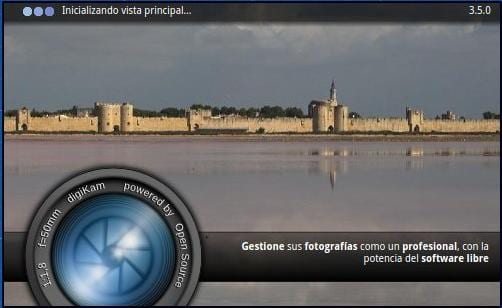
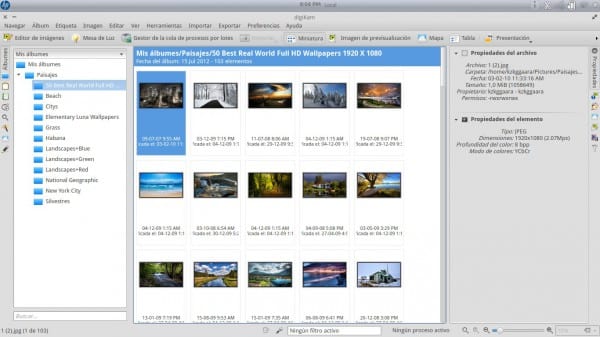
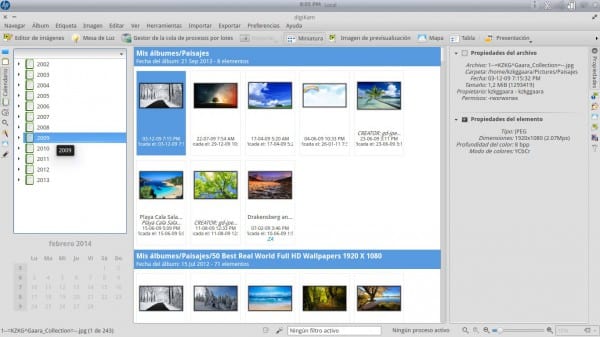
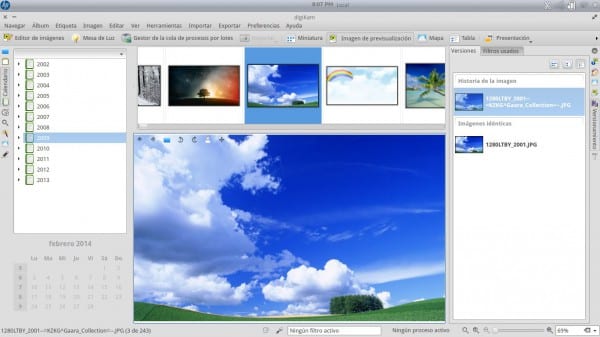
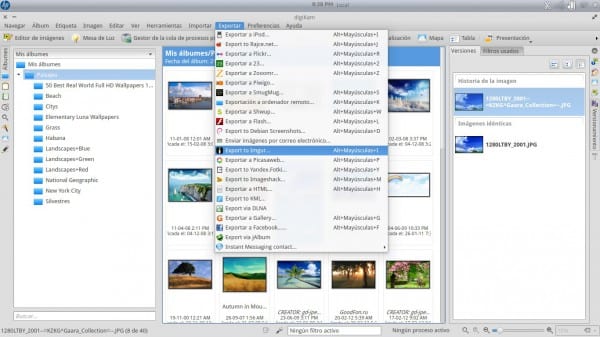
I with Gwenview I am left over 😀
I have both installed. To download the photos from the camera, tag them and so on: digikam, but to see any image (from the camera or downloaded) gwenview is much faster.
What I didn't quite get is why the nepomuk labels go on one side and the dikgikam labels on the other. A shame…
Since I discovered digikam I have not changed, I can download the photos from the camera and change its name on the fly.
Also, I can choose some photos and upload them to my flickr directly, without having to open a browser or something like that.
It has many more utilities but I have not used them all, as in many applications. And to see the photos quickly, I use the one that comes by default with Ubuntu.
Regards,